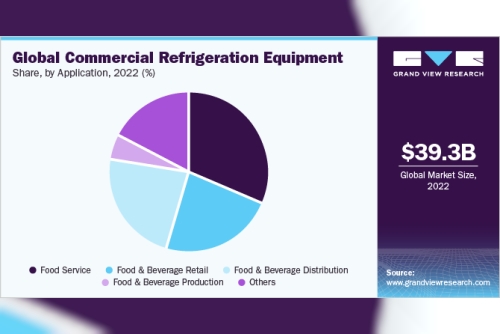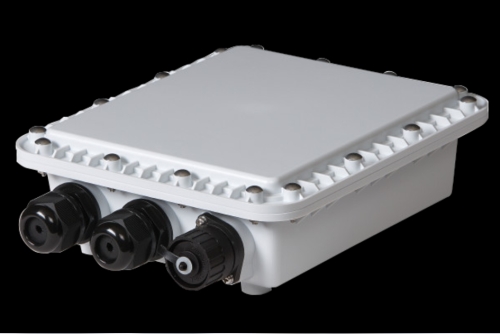The global commercial refrigeration equipment market was valued at USD 40.82 billion in 2023 and is projected to grow at a compound annual growth rate (CAGR) of 5.2% from 2023 to 2030. Market growth is largely driven by the expanding hospitality and tourism sectors, as well as the increasing preference among consumers for takeaway meals. Additionally, regulatory changes favoring low global warming potential (GWP) refrigerants and ongoing technological advancements are expected to create substantial growth opportunities.
The growth of international food trade has also increased the demand for commercial refrigeration systems, especially for frozen foods, processed foods, and seafood that require storage and transport. Technological innovations, such as liquid-vapor compression and ammonia absorption systems, are further driving product demand. Key manufacturers are focusing on research and development (R&D) to improve design and temperature control, thereby gaining a competitive edge. The need to effectively control and monitor commercial kitchen environments is also expected to create more opportunities for the refrigeration market.
Gather more insights about the market drivers, restrains and growth of the Global Commercial Refrigeration Equipment Market
Smart and automated refrigeration units are gaining significant traction. According to the Federal Energy Management Program, ENERGY STAR-certified commercial refrigerators use an average of 1.89 kWh of energy per day, whereas less efficient units consume around 4.44 kWh daily. Growing demand for energy-efficient units, driven by environmental and cost considerations, is encouraging manufacturers to create innovative and efficient designs.
Environmental concerns around high-GWP refrigerants, which contribute to global warming and ozone depletion, are also leading manufacturers to explore alternative technologies. As the need for safer and more sustainable cooling solutions grows, companies are incorporating advanced magnetic refrigeration systems that improve energy efficiency and reduce operational costs. According to the U.S. Department of Energy, magnetic refrigeration can reduce energy consumption by up to 30%, further encouraging their adoption.
The COVID-19 pandemic initially disrupted the manufacturing and shipping of commercial refrigeration equipment due to strict containment measures. However, the crisis also accelerated the demand for vaccine production and storage, driving growth in cold storage solutions to support global vaccination efforts. The rising demand for vaccine storage is expected to further increase the need for transportation refrigeration equipment in the coming years.
Capacity Insights
The 51 to 100 cubic feet segment held the largest revenue share in 2022, primarily due to the growing number of specialty food stores, hypermarkets, and supermarkets globally. These large retail outlets require extensive refrigeration capacity to store a diverse array of perishable items like fresh produce, dairy, meat, and frozen foods. Their expansion is fueling demand for commercial refrigeration units in this size range to accommodate larger inventories. Additionally, these businesses must comply with food quality regulations, further driving demand for refrigeration equipment.
The under 50 cubic feet segment is projected to grow at the fastest rate from 2023 to 2030. This growth is largely due to the increasing need for refrigeration solutions in concentrated application areas like cold chain logistics and food services. Compact, energy-efficient, and cost-effective, these smaller units are ideal for small businesses and confined spaces, making them a popular choice in convenience stores, cafes, and small restaurants. Their size allows them to store perishable items effectively without requiring additional space.
Application Insights
The food and beverage retail segment is expected to achieve substantial growth from 2023 to 2030, driven by advances in cold chain logistics, which are critical for transporting temperature-sensitive products. The demand for reliable, high-end, temperature-controlled refrigeration units for transport vehicles handling beverages, liquor, seafood, biopharmaceuticals, and other perishables is supporting the growth of this segment. Additionally, the growing preference of capital-intensive customers in the food and beverage distribution industry for sectional refrigerated trailers is expected to drive segmental growth over the coming years.
Order a free sample PDF of the Commercial Refrigeration Equipment Market Intelligence Study, published by Grand View Research.
















